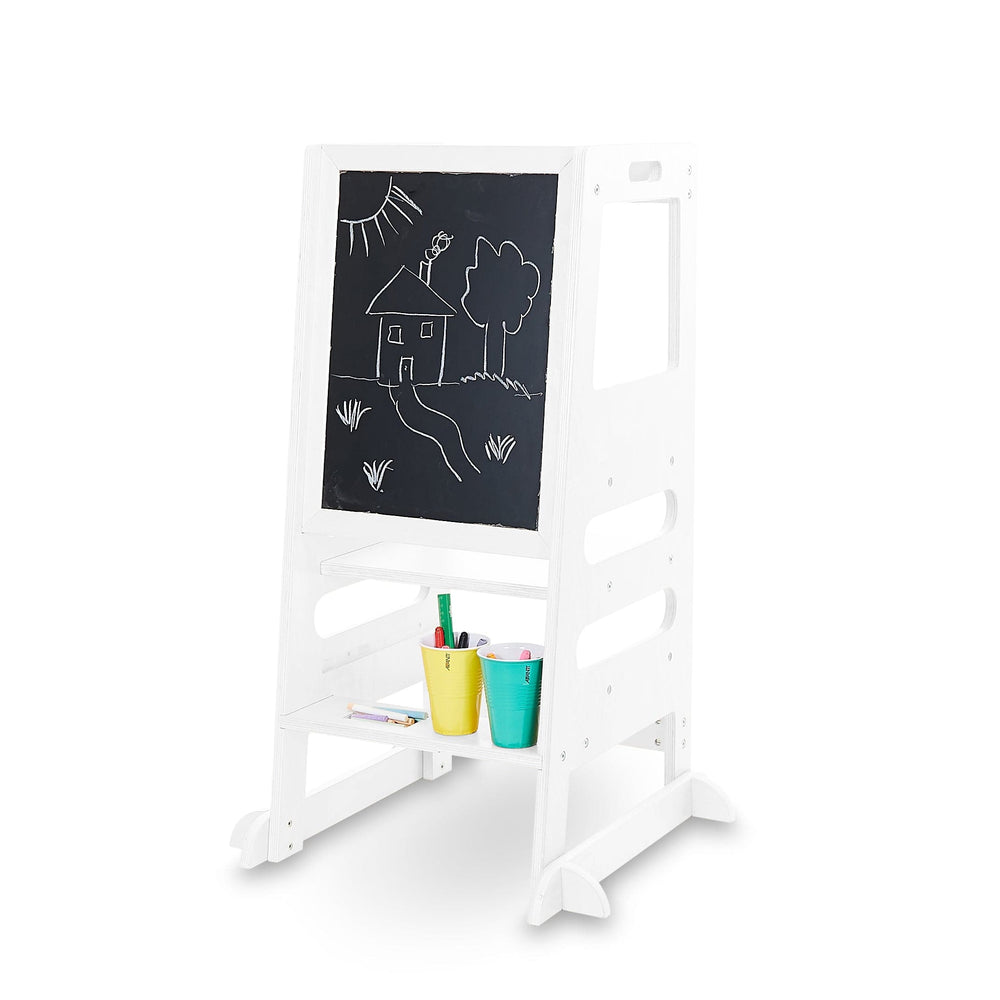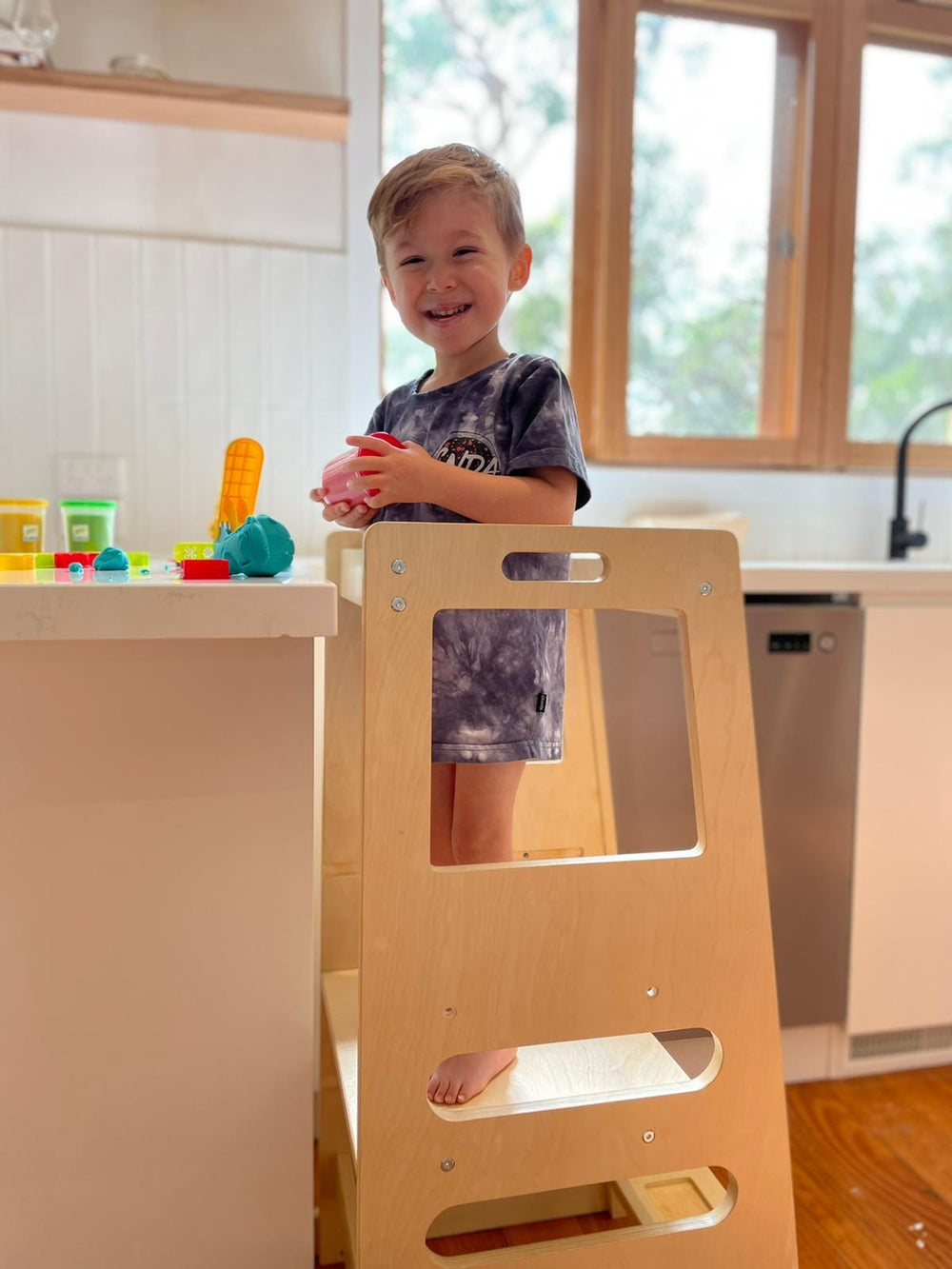Learning Towers: What Age Is Appropriate to Start and When to Transition Out
Learning towers are versatile children's furniture designed to provide a safe platform for kids to engage in various activities in the kitchen or elsewhere. Introducing a learning tower to your child's life is an important decision, and timing is key. In this blog, we’ll explore the age-appropriateness of starting your child's learning tower journey and the crucial considerations for transitioning out of them as they grow. Ensuring the right balance between safety and independence is vital for your child's development.
What Are Learning Towers?
Learning towers are innovative pieces of furniture designed to elevate children to countertop height, promoting active involvement in daily activities. These versatile structures encourage independence, creativity, and learning through hands-on experiences. Check out Hip Kids’ collection of learning towers for inspiration.
Benefits of learning towers for children and parents
Learning towers offer a secure platform for children to engage in kitchen tasks, fostering self-confidence and life skills. They enable parents to bond with their little ones while cooking and provide a safe alternative to precarious climbing. These towers are not just furniture; they're stepping stones to independence.
The Ideal Age to Introduce Learning Towers
Introducing learning towers should align with developmental milestones. Experts suggest considering factors such as a child's ability to stand independently and the cognitive maturity to understand boundaries. Studies indicate that around 18 months is a typical starting point, but readiness can vary among children.
Typical age range for starting
The typical age range to start using learning towers is between 18 months to 2 years. However, it's essential to remember that every child's development is unique, and readiness may differ.

Benefits of Learning Towers for Different Age Groups
So, what age is a learning tower for? These versatile structures offer distinct advantages tailored to various age groups, enhancing their growth and independence.
Infants (under 1 year)
For infants, learning towers provide a supportive environment to observe and engage with their parents or caregivers during daily activities, promoting sensory development and strengthening bonds.
Toddlers (2-3 years)
Toddlers benefit from learning towers by actively participating in kitchen tasks, refining motor skills, and gaining confidence as they explore their surroundings.
Preschoolers (4-6 years)
Preschoolers continue to harness independence and creativity through learning towers, using them as easels for art projects, fostering cognitive and fine motor skills while having fun.
Safety Considerations for Learning Towers by Age
To guarantee safety when using learning towers, it's crucial to provide supervision and take necessary precautions. Let's explore some safety features and common concerns associated with these structures.
Safety features to look for
When choosing a learning tower, prioritise safety features like non-slip surfaces, sturdy construction, and adjustable heights. For a great example, check out the Original Learning Tower by Little Partners.
Common safety concerns and how to mitigate them
Common concerns include falls and pinched fingers. Mitigate these risks by maintaining supervision, teaching safe usage, and ensuring a secure environment by positioning the tower away from hazards.
How to Adapt Learning Towers for Growing Children
When purchasing a learning tower, consider adjustable features like height settings and removable safety rails or add-ons. These adaptations ensure the tower continues to meet your child's changing needs. Monitor your child's progress to determine when it's appropriate to remove safety features and promote more independence.
Activities that grow with your child
Learning towers can evolve alongside your child, facilitating activities such as cooking, art projects, and learning, fostering their development through each stage.

Signs It’s Time to Transition Out of a Learning Tower
Understanding when your child has outgrown the learning tower is crucial for their continued development. Here, we'll explore the signs that indicate it's time to transition away from this supportive tool.
Age guidelines
Consider transitioning your child out of their learning tower when they reach 5-6 years old, as they develop more balance and coordination to safely use regular furniture.
Alternative solutions for older children
Explore alternative tools that encourage independence and engagement as your child outgrows their learning tower. As your child matures, encourage independence by providing step stools for bathroom sinks and kitchen counters, and set up a dedicated table and chairs for art activities to foster creativity and engagement.
FAQs
Can you use a learning tower for multiple children of different ages?
Yes, many learning towers are adjustable, accommodating children of various ages and heights, making them versatile tools for families with multiple kids.
How do learning towers compare to traditional step stools?
Learning towers offer added safety and versatility compared to traditional step stools, providing a secure platform for children to actively engage in kitchen tasks and other activities.
Are there any learning towers designed to grow with your child?
Yes, some learning towers come with adjustable features, like height settings and removable safety rails or add-ons, allowing them to adapt to your child's changing needs as they grow.
Conclusion
Learning towers are incredible tools for children's development, but their age-appropriate use and timely transitioning are paramount. Understanding your child's readiness and providing a safe, adaptable environment is key. As they grow, these structures can evolve alongside them, fostering independent learning.
Ready to explore the world of learning towers? Visit HipKids and browse our range of innovative and safe learning towers to find the perfect fit for your child. Browse our collection today and empower your child to reach new heights!





